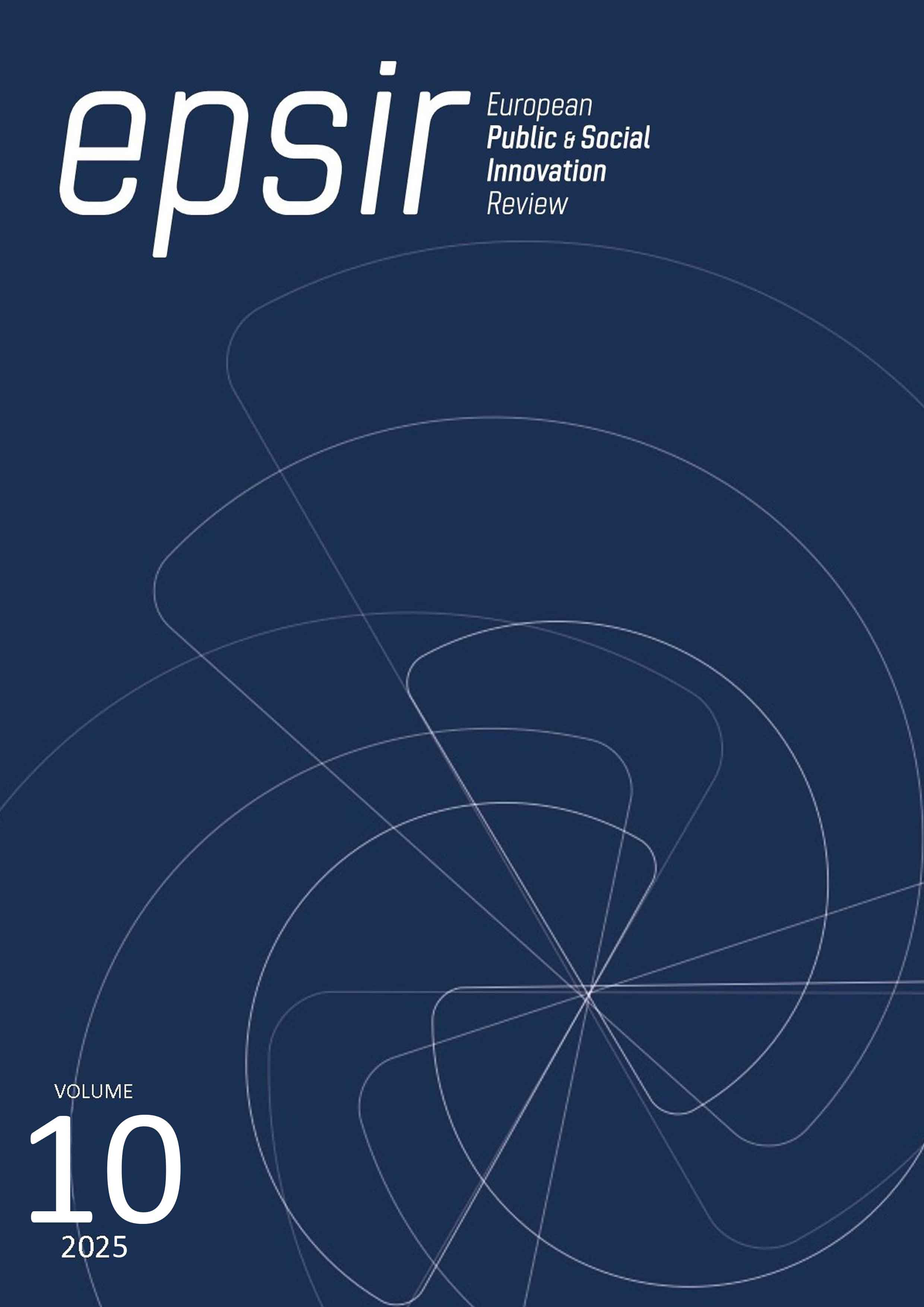La orientación vocacional en el sistema no universitario del ecuador: percepción de los estudiantes
DOI:
https://doi.org/10.31637/epsir-2025-2018Parole chiave:
orientación vocacional, Educación General Básica, percepción de los estudiantes, innovación, incertidumbre, mercado laboral, Ecuador, familiaAbstract
Introducción: El estudio tiene como objetivo caracterizar las valoraciones de los estudiantes sobre la orientación vocacional en dos instituciones educativas de Ecuador, durante el periodo académico 2024-2025. Metodología: Se utilizó un enfoque mixto y nivel descriptivo para analizar las percepciones de los estudiantes sobre los aspectos de la orientación vocacional en la Educación General Básica, en dos provincias ecuatorianas. Resultados: Los estudiantes valoraron positivamente aspectos como la información sobre carreras y la disponibilidad de materiales de orientación vocacional. También destacaron la influencia de padres y tutores como un factor importante en sus decisiones vocacionales. Conclusiones: La orientación vocacional es considerada relevante y positiva por los estudiantes, y la participación familiar juega un papel crucial en el proceso de toma de decisiones vocacionales.
Downloads
Riferimenti bibliografici
Álvarez, C. A. R. y Junca, R. S. G. (2021). La formación vocacional, un diagnóstico desde la educación STEM y los ambientes escolares. Tecné, Episteme y Didaxis: TED, 1198-1204.
Barreto, M., Chumpitaz, P. y Sunción, S. (2016). Percepción de factores que influyen en la elección vocacional de alumnos de educación secundaria de las instituciones educativas del distrito de Corrales, Tumbes, 2011. Manglar, 11(2), 55-61. https://revistas.untumbes.edu.pe/ DOI: https://doi.org/10.17268/manglar.2014.015
Caro Navarrete, C., Maureira Cruz, Y. y Céspedes Cárdenas, P. (2021). Evaluación de una estrategia de acompañamiento a la orientación vocacional en estudiantes secundarios de las regiones de Ñuble y Biobío. Revista de Estudios y Experiencias en Educación, 20(44), 254-268. http://dx.doi.org/10.21703/0718-5162.v20.n43.2021.015 DOI: https://doi.org/10.21703/0718-5162.v20.n43.2021.015
Castellanos, L. M., Peña, J., Aravena, M. y Chavarría, C. (2017). Percepción de estudiantes de educación media sobre un programa de orientación vocacional: un estudio cualitativo. Revista de Psicología y Ciencias del Comportamiento de la Unidad Académica de Ciencias Jurídicas y Sociales, 8(1), 4-14. https://revistapcc.uat.edu.mx/index.php/RPC/article/view/135 DOI: https://doi.org/10.29365/rpcc.20170807-54
Escalante, I. C., Vizcarra, M. L. y García, A. R. (2021). Modelo para facilitar el proceso de orientación vocacional en estudiantes de bachillerato. SUMMA, 3(1), 1-28. https://doi.org/10.47666/summa.3.1.20 DOI: https://doi.org/10.47666/summa.3.1.20
Figueroa, F. M. M., Vergara, G. M. M., Pico, G. L. M., Soledispa, E. J. S. A. y Briones, M. F. B. (2021). La psicopedagogía y su influencia en la orientación vocacional de los estudiantes. Dominio de las Ciencias, 7(1), 850-868. https://doi.org/10.23857/dc.v7i1.1744
Flores, R. C. y Molina, I. C. (2018). Estudio exploratorio de la elección vocacional en estudiantes de bachillerato. REFCalE: Revista Electrónica Formación y Calidad Educativa, 6(3), 61-74. https://refcale.uleam.edu.ec/index.php/refcale/article/view/2905
Hernández-Sampieri, R., Fernández Collado, C. y Baptista Lucio, P. (2018). Metodología de la investigación: las rutas cuantitativa, cualitativa y mixta. McGraw-Hill México.
Min, T. A. M., de la Paz, A. P. y Villavicencio, P. M. (2024). Impacto de la formación profesional y orientación vocacional en los estudiantes hacia la elección de carreras técnicas en la Unidad Educativa Leónidas Grueso George. Ciencia Digital, 8(3), 6-29. https://doi.org/10.33262/cienciadigital.v8i3.3065 DOI: https://doi.org/10.33262/cienciadigital.v8i3.3065
Sierra-Sánchez, J. (2014). Análisis de la situación laboral del profesorado de Ciencias de la Comunicación en España. Historia y Comunicación Social, 19(2), 759-778. https://doi.org/10.5209/REV_HICS.2014.V19.45064 DOI: https://doi.org/10.5209/rev_HICS.2014.v19.45064
Torres, J. C. C., Angaspilco, J. E. M., Cabrera, X. C. y Veliz, L. D. C. V. (2020). Estrategia de formación vocacional para la orientación vocacional. Revista Científica Epistemia, 4(3), 1-14. https://acortar.link/jKwxHh DOI: https://doi.org/10.26495/re.v4i3.1309
Downloads
Pubblicato
Come citare
Fascicolo
Sezione
Licenza
Copyright (c) 2025 Elsy Rodríguez Revelo, Vallardo Villegas-Ricuater

Questo lavoro è fornito con la licenza Creative Commons Attribuzione - Non commerciale - Non opere derivate 4.0 Internazionale.
Authors who publish with this journal agree to the following terms:- Authors retain copyright and grant the journal right of first publication with the work simultaneously licensed under Creative Commons Non Commercial, No Derivatives Attribution 4.0. International (CC BY-NC-ND 4.0.), that allows others to share the work with an acknowledgement of the work's authorship and initial publication in this journal.
- Authors are able to enter into separate, additional contractual arrangements for the non-exclusive distribution of the journal's published version of the work (e.g., post it to an institutional repository or publish it in a book), with an acknowledgement of its initial publication in this journal.
- Authors are permitted and encouraged to post their work online (e.g., in institutional repositories or on their website) prior to and during the submission process, as it can lead to productive exchanges, as well as earlier and greater citation of published work (See The Effect of Open Access).



